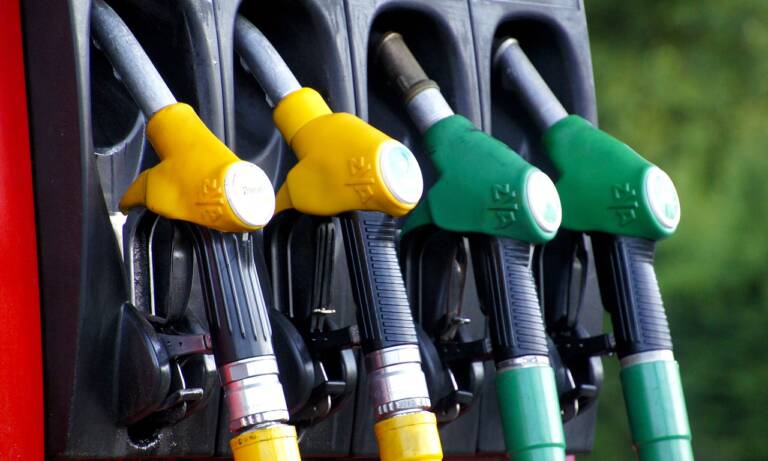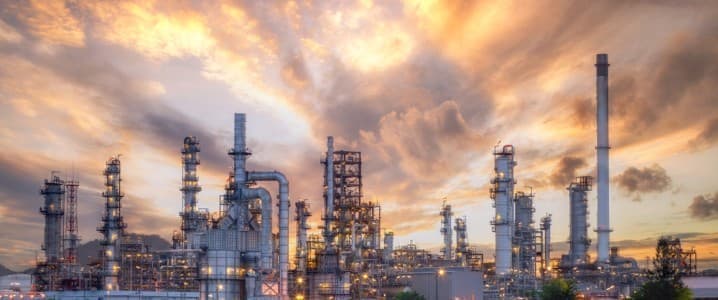Diesel, petrol and Kerosene Avio: journey inside petroleum derivatives

In today's world, crude oil represents a critical resource for the global economy. A variety of products are obtained from this black and dense raw material, including the fossil fuels that power our means of transport: diesel, petrol and aviation kerosene. In this blog post, we will dive into the petroleum refining process to better understand the genesis of these three fuels, their distinctive characteristics, and their footprint on the environment.
Now let's do a quick summary of how fuels are produced
1. The Refining Process:
Refining crude oil begins immediately after extraction with a treatment with chemicals and heat to remove water and solid particles and to separate residual natural gas. Then it is stored in sorting tanks, from where it is transported to the refineries by continuous pipelines (pipelines) or by equipped ships (tankers or oil tankers) or by special motor vehicles (tankers) and railway wagons (tank cars) to the refineries.
A refinery is a processing plant, where marketable products are manufactured from crude oil. The refinery is a large plant, divided into three distinct blocks:
- crude oil storage tanks;
- sitylation towers for the various processes;
- tanks for the storage of refined products.
These three parts are connected to each other by bundles of pipes, which allow continuous cycle processing: In the first tanks the level continually lowers, because the crude oil flows into the plants. In the processing towers the oil is heated, cooled, heated again, compressed, filtered, etc., so it is subsequently separated into the different products that compose it. In the last tanks the level rises continuously, because the distilled products flow into them. Distillation of crude oil The first processing is carried out on crude oil and is called fractional distillation: in fact oil is a mixture of liquid hydrocarbons (kerosene, petrol, diesel,…).
To separate the various components of oil, distillation is used, that is, a process that involves vaporization and condensation. It is done in the highest tower of the refinery. The distillation tower. It is a tower about 80 m high, inside there are many floors made up of steel plates. Each dish is kept at a specific temperature, which is increasingly lower as you climb in height. Each plate contains many holes, equipped with a chimney and a bell. Vapors of a certain type, when they touch the bell that corresponds to the temperature of their condensation, become liquid. The other vapors, however, bubble through the distillate and continue to rise.
Through gradual heating and different separation phases, different products are obtained based on their boiling point:
- Gas: LPG (liquefied petroleum gas)
- Petrol: Used for petrol engines
- Naphtha: raw material for the chemical industry
- Diesel oil: used for diesel engines
- Kerosene: Used for airplanes
- Fuel oils: used for energy production and heating
2. Diesel:
Diesel fuel, also known as gas oil or diesel, is a fuel derived from the distillation of crude oil. It has a higher density than gasoline and a higher boiling point. Its main use is in diesel engines, which stand out for their efficiency and high torque.
Production:
Diesel is extracted from the portion of oil that boils between 200°C and 350°C. The refining process may include further treatments to improve its properties, such as desulfurization to reduce sulfur emissions.
Characteristics:
- High energy density
- Good driving torque
- Low fuel consumption
- Lower CO2 emissions than petrol
Fluidity
An important requirement for automotive diesel is its cold properties, represented by the temperature at which the fuel begins to cloud and offer greater resistance to flowing inside a given filter. For this reason, the reference specification EN 590 provides for the presence during the winter period in some areas of diesel fuel called "arctic", fully efficient down to temperatures of -21 °C.
Combustion
The cetane number indicates the delay between injection and the start of combustion. A high cetane number indicates a diesel fuel that burns more efficiently and therefore offers better performance. The minimum cetane number required today in automotive diesel is 51
For reasons of safety and regularity of combustion it is important that it is free of light or heavy fractions, responsible for the formation of carbon deposits and incomplete combustion. The density is 835 kg/m³, its calorific value is around 40.9 MJ/kg (or 10200 kcal/kg).
3. Petrol:
Gasoline is a volatile and highly flammable fuel used primarily in gasoline engines. It is composed of a mixture of light hydrocarbons with different octanes, which determine its resistance to self-ignition.
Production:
Petrol comes from the distillation of crude oil between 40°C and 200°C. Its composition is then optimized with the addition of additives to improve its performance and stability.
Characteristics:
- High volatility
- High calorific value
- Good acceleration
- Higher CO2 emissions than diesel
The anti-knock capacity
Petrol must not detonate, explode, as soon as it is compressed by the piston of the internal combustion engine, because it would not guarantee good compression and therefore a high energy emission. The lower the detonation, the higher the quality of the petrol. The latter data is measured with the octane number (NO). This is a one-scale reference index, where pure isooctane equals 100 (slightly detonating) and n-heptane equals 0 (very detonating). To improve the anti-knock properties of petrol, additives made up of lead compounds were used in the past, the use of which, due to their polluting effects, led to the birth of the so-called green, lead-free petrol. In this, the previous antiknock agent (tetraethyl lead) has been replaced mainly by benzene, but methyl tert-butyl ether (MTBE) and ethyl tert-butyl ether (ETBE) are also used. An EU directive has banned the marketing of leaded petrol throughout the European Union since 2000.
The use of MTBE has recently been banned in the United States of America due to its highly polluting effect on aquifers and its carcinogenicity. ETBE has recently been taken into greater consideration as it partially comes from a renewable source. In fact, it consists of a reaction product between isobutylene and ethanol, which may be of agricultural origin.
Petrol is extremely flammable, so much so that it can ignite with a simple spark even from a distance. It is defined as one of the most dangerous flammable liquids; in fact it has caused a lot of damage in the past due to fires and explosions.
4. Aviation Kerosene:
Aviation kerosene, also known as Jet A-1, is a specific fuel for jet aircraft. It has a higher flash point than gasoline and better stability at low temperatures.
Production:
Aviation kerosene comes from the distillation of crude oil between 150°C and 250°C. It then undergoes a more rigorous refining process to ensure the purity and high quality required for aviation.
Characteristics:
- High thermal stability
- Low freezing point
- Good resistance to combustion
- Significant CO2 and NOx emissions
5. The Percentage from Oil:
The percentage of diesel, gasoline and aviation kerosene obtained from crude oil varies depending on the type of crude oil and the refining process used. On average, crude oil distillation produces:
- Diesel: 20-30%
- Petrol: 20-30%
- Aviation kerosene: 5-10%
6. Final Considerations:
Other by-products from refining are liquefied petroleum gases, used in transportation, fuel oils, which can be used further or refined themselves, and bitumen, the solid residue used for roads. Furthermore, there are a number of by-products useful in the activity of the chemical industry.

Thanks to our Telegram channel you can stay updated on the publication of new Economic Scenarios articles.
The article Diesel, petrol and Kerosene Avio: a journey into petroleum derivatives comes from Economic Scenarios .
This is a machine translation of a post published on Scenari Economici at the URL https://scenarieconomici.it/gasolio-benzina-e-kerosene-avio-viaggio-allinterno-dei-derivati-del-petrolio/ on Sat, 23 Mar 2024 07:30:53 +0000.

